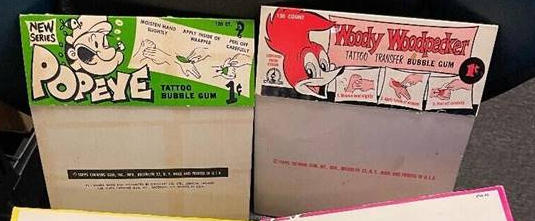Somewhat lost in the wake of Batman capturing the attention of the nation's TV viewers, both young and old, in the Fall of 1966, The Green Hornet is primarily remembered today as the show that introduced Bruce Lee to America. Originally a 1930's radio program originating out of Detroit, Britt Reid, a.k.a. the Green Hornet was eventually revealed to be the grand-nephew of John Reid, known to millions as The Lone Ranger. The Green Hornet fought crime wearing a mask and using a gun (sound familiar?) and the show had a compelling theme song, a fully orchestrated "Flight of the Bumblebee".
Commercial radio took off in 1920 and by 1933 was firmly entrenched in America. Detroit, thanks to the concentration of automobile manufacturers and related industries located there and nearby, had a wealth of resources available when it came to creating and marketing entertainment, no surprise for the fourth largest city in the United States at the time. The Lone Ranger debuted on George Trendle's station WXYZ on January 31, 1933, the same day the eight station Michigan Regional Network it spearheaded was hatched. The show was broadcast three times a week and quickly worked its way east, conquering Cincinnati (on WLW, which had the highest powered transmitter in the country at the time), Chicago (WGN) and New York (WOR) by 1934. That in turn led to the formation and rise of the Mutual Broadcasting System among these four stations, the first national network in the country to have content created by each market, as opposed to the three existing networks (CBS and NBC's Red and Blue) where content was created in New York and then distributed downstream.
The Green Hornet was in coast-to-coast markets by 1937 and Trendle, looking to expand the audience for the show, eventually ported his own station's creation from Mutual to the NBC Blue Network. After some government induced gyrations NBC Blue several years later became ABC and that is where The Green Hornet premiered on television in September 1966, nine months after Batman hit the airwaves, with the "Flight of the Bumblebee" theme music still intact. Despite being given the important, and kid-oriented 7:30 PM slot on Fridays (Batman, with which it shared a production company, had that time slot as well but on Wednesdays and Thursdays), The show was thought to be a star vehicle for Van Williams but the Green Hornet, lacking the camp and wonderfully odd comedic gravitas that defined Batman, played it straight and tanked with only 26 episodes produced. Lee, of course, became a worldwide star while Williams faded to occasional guest star roles for the most part thereafter.
Topps produced a 44 sticker set that was a bit of a mess design-wise. Donruss ended up with the rights to produce a set of trading cards commemorating the show, so it appears two licenses for similar products were granted. Actually make that three, as Ed-U-Cards also made a deck of 52 playing cards using black-and-white images from the show. A lot of tied-in geegaws were also created outside the realm of cards and stickers and it's clear the show was considered, prior to launch, to be can't miss viewing, especially as Batman was in full ascension as it entered its second season in September of 1966.
Topps was not able to include gum in their Green Hornet packs as a result of Donruss obtaining the confectionery license and it's noteworthy that this was the first time Topps dropped their bespoke chew for a licensed property:
It's a very green theme, as you would expect. Note the primordial commodity code at the top right. That wrapper was a miscut (common for some reason with these) and the full code was like so:
I can't quite make it out but believe that reads 466-01-1-6. Topps had just started using such codes in 1966 after all production was moved from Brooklyn to Duryea, PA.
The box used similar colors:
The bottom indicia was typical of the times and provided an excellent looks at the new curved-T Topps logo, which was never a feature on the pack and visible box graphics for licensed properties:
466-06-1-6 for that indicia I think.
The stickers were all over the place and may feature the most designs on a per-capita basis of any Topps set up to this point. Here are just some of them:
Nice five o'clock shadow there Van. Topps must have run out of publicity stills as some cards were illustrated:
That's just weird! The backs were typical pressure stock, scored once:
While the stickers can have their issues and were essentially designed to be destroyed, they are found quite easily today as Topps must have been stuck with a ton of unsold inventory. I suspect they ended up selling a lot of these in Fun Packs and at a guess that would have been during Hallowe'en 1967.
The set is a right mess, especially when compared to the Donruss cards, which are among the nicest that company produced but the main problem was with the show itself. I've seen a handful of episodes and they are, well, kinda boring. I know some folks are fans of the show but Batman pretty much sucked up all the oxygen in 1966 and The Green Hornet wasn't even rerun much, probably due to the low number of shows available for syndication (where 65 episodes was the magic minimum number), so it has still not been widely seen to this day. As noted above, it's mostly remembered today for Bruce Lee.



































